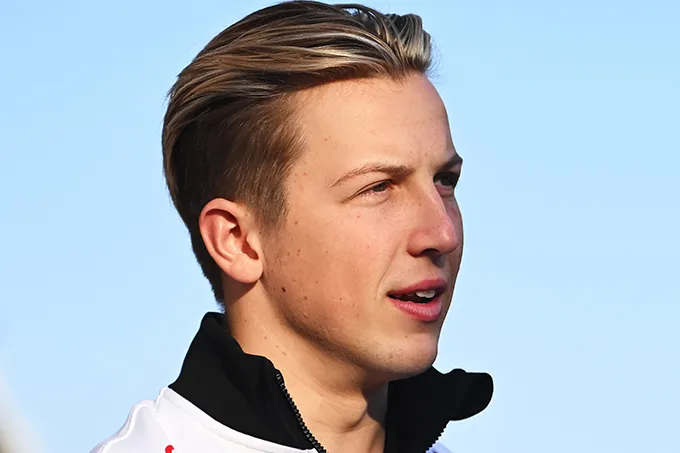Liam Lawson’s F1 journey highlights the crucial preparation young drivers undergo to reach top performance in motorsport’s elite category.
The young drivers who started mid-season last year, namely Liam Lawson, Oliver Bearman, and Franco Colapinto, have impressed F1 insiders and observers. Alex Albon, who has been working with Colapinto since Monza, admits that his young teammate is very strong and fast.
“I’m impressed. I wouldn’t say surprised. I think he was already fast during the test he did at Silverstone this year, and he took the race very comfortably,” said Albon about his new teammate.
“He doesn’t seem tense. He’s relaxed, which is the best thing you can do when stepping into a Formula 1 car mid-season. So, yes, I’m not surprised, but pleasantly impressed.”
Lawson admits that being part of a program like the Red Bull Academy has prepared him well for the role of a driver, but he also notes that drivers used to have much more time behind the wheel thanks to thousands of kilometers in testing.
“We can’t really do tests. I know that many years ago, you could test whenever you wanted, you had test cars and things like that. That would be really, really cool. Obviously, that’s not how the sport is today,” the New Zealander remarked.
“That’s why simulator driving and the work we do behind the scenes with data and weekend preparation is mostly simulator work, I’d say. Each team has its own simulator that it develops and works with.”
“It’s essentially about trying to make it as realistic as possible. As reserve drivers, we spend a lot of time, even going through Formula 3 and Formula 2, familiarizing ourselves with Formula 1 work and preparing for a Formula 1 race.”
“I think that’s why the access we have now gets closer and closer every year. And I think that’s why it’s becoming, let’s say, easier or more obvious for us to be able to step in. But it’s a challenge, and there’s probably a lot people don’t see.”
“Driving fast is the easiest part”
Lando Norris responded to the question of whether starting mid-season in Formula 1 is a risk for both the driver and the team that trusts them: “Is it a risk? I think it’s always a risk, for sure. What we’re seeing are very talented drivers stepping up.”
“I feel older when I say this, but, you know, like Liam, like Oscar, like Franco, I think you’re going to see a lot of drivers coming in and doing a good job, performing well, qualifying well, etc. I think that’s what’s most natural for drivers.”
“But I think Formula 1 is not about one, two, or three weekends. It’s about 24 races, a whole season, and developing the car over the seasons. There are a lot of drivers who can come in and drive a Formula 1 car quickly.”
“I think that’s the easiest part, to come in and drive the car fast. That’s what we were born to do, that’s what we live for, driving as fast as possible. And I think the easiest part is to come in and drive the car quickly.”
“The hardest part is the long-term. It’s the 24 races, not crashing the car every weekend, avoiding stupid mistakes, helping your team, being a team leader, not just focusing on this season but also looking ahead to the next and knowing when to make sacrifices.”
“There’s a lot that makes a driver more complete than just someone who can come in and perform well for one weekend. And I’m not taking anything away from those guys. When you see Franco coming in and doing the job he did mid-season, it’s quite impressive.”
“And I think everyone acknowledges that, but it’s another challenge to do that every weekend, not make mistakes, not crash the car—especially now in a cost-capped championship, it’s even trickier to push and find those limits.”
“There are pros and cons, but being a Formula 1 driver isn’t just about driving a car fast, which many people can do, but doing it consistently at every race, in every qualifying session, while working together as a team.”
“I think that’s what makes a good driver overall, not just a fast one. There are these two aspects, but I’m always impressed. And I think it’s always impressive to see how quickly young drivers can be competitive today.”
“I’m not referring to my own age, but young drivers like Franco come in and reach such a high level so fast. It’s due to various factors, but also simulators and the advanced preparation that’s possible today compared to a few years ago.”
- You may also like>Sainz Applauds Williams’ Progress, Awaits New Challenge
- Also make sure you follow us on social media>Facebook and>Twitter

Young Drivers Thrive: Lawson Leads F1’s New Generation Young Drivers Thrive: Lawson Leads F1’s New Generation
